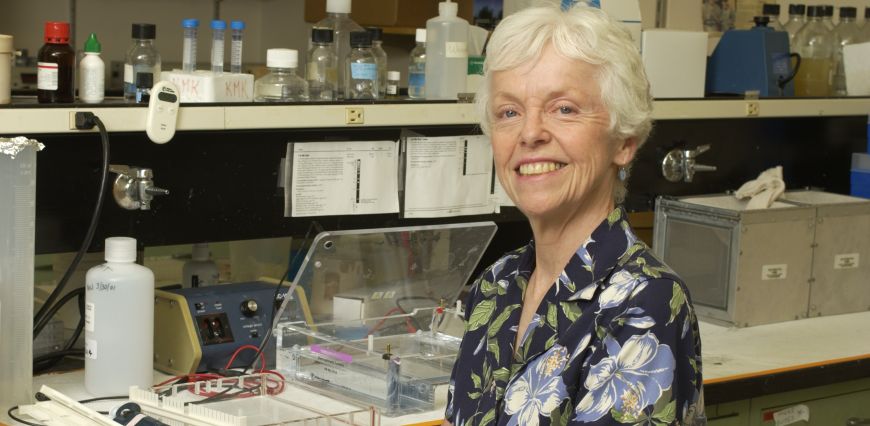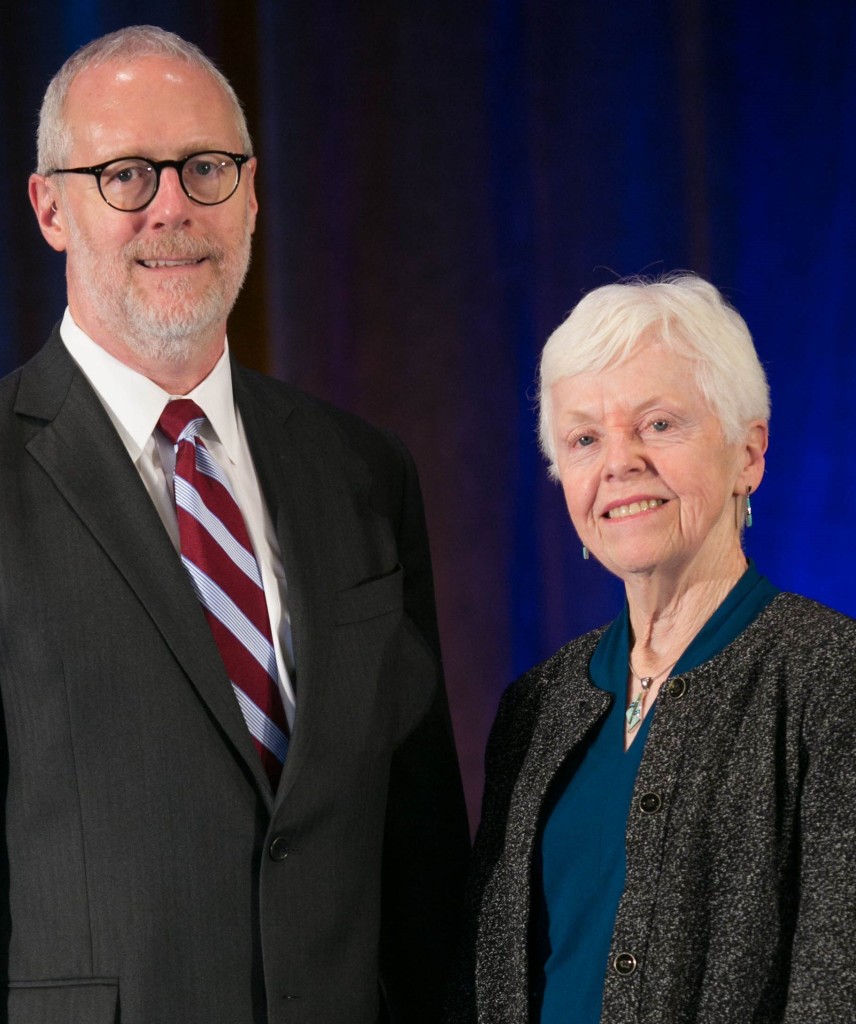
You’ll have to forgive Carol Blair – an expert in insect-borne viruses – if she seems a little blasé about being the first woman to win the lifetime achievement award in her field.
The American Society for Tropical Medicine and Hygiene recently honored Blair with the Richard M. Taylor Award, which recognizes scientists with outstanding careers in arbovirology and is presented every three years.
“I was greatly honored, but I’ve been doing that all my life,” she said in response to a question about another first-female honor in her long career. “It made me feel very good because it was a recognition that I had spent many years doing what I love, and I love getting young scientists involved.”
In fact, she was the first female department head in the College of Veterinary Medicine and Biomedical Sciences. Now a professor emerita in the Department of Microbiology, Immunology, and Pathology, Blair spent 39 years teaching and conducting research at CSU.
During those years, she developed notable expertise in viruses spread by arthropods, the family of blood-sucking bugs that includes mosquitoes and ticks. These vectors spread viruses that cause globally devastating diseases; they include West Nile, dengue, tick-borne encephalitis and yellow fever viruses, among others.
Leading women in academic science

Blair started graduate school studying molecular biology in 1964, the same year the Civil Rights Act passed the U.S. Congress, outlawing discrimination based on race, color, religion, sex, or national origin. That’s when she began discussing the roles of women in academic science with her peers.
She recalled a Tropical Medicine Society meeting in Denver years ago: “I remember talking to two female friends in my age group, and we looked around and we couldn’t see any other women there. We said, ‘This has got to change.’”
When Blair began studying arthropod-borne viruses, far-flung field studies of yellow fever and mosquitoes were considered the work of men (although she had been a wild snake catcher for an arbovirology research project at the University of Utah as an undergraduate). Research began to open up to more women as it evolved to include lab-based molecular biology.
Blair was nominated for the award by Barry Beaty, a retired University Distinguished Professor of virology and a colleague in the Department of Microbiology, Immunology, and Pathology. He won the award in 2012.
“He has really been a guiding light in my research,” said Blair, who has been part of the Arthropod-borne and Infectious Disease Laboratory. “I also had some good mentors in CVMBS in Jim Voss and Gordon Niswender.”
“This award goes to some of the luminaries, not just in arbovirology, but in virology and public health generally. It is truly a recognition of a very significant career-long contribution,” said Kathryn Hanley, associate professor of biology at New Mexico State University and president of the American Committee on Arthropod-Borne Viruses.
When she’s not on campus, Blair and her husband, retired University Distinguished Professor Patrick Brennan, a co-founder of the CSU Mycobacteria Research Laboratories, “like to run races in fun places.” They flew to Minneapolis in October for a 10-mile race and to Philadelphia for a 5-mile Thanksgiving Turkey Trot (They happen to have grandchildren living in both cities). They will spend the winter hiking and snowshoeing.
Although she retired last year, Blair continues to keep office hours at CSU and is involved in research and graduate student committees.
“My research in the last 10 years is among most exciting research I’ve done in my whole career,” she said. “We love to have undergraduates as well as graduate students work in our labs because it’s important for them to know how exciting, but sometimes frustrating, research can be. That’s how I got my start!”